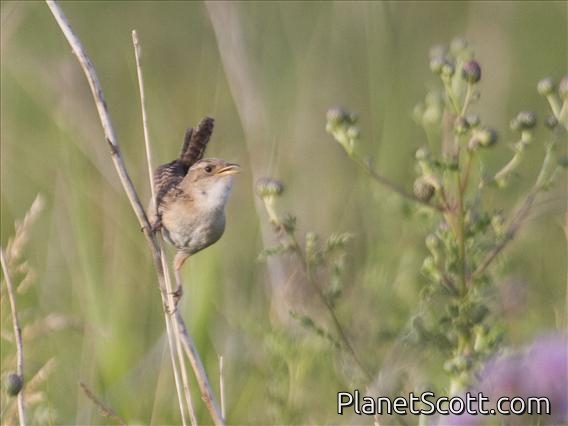Sedge Wren (Cistothorus stellaris)

Sedge Wren (Cistothorus platensis)
×


Sedge Wren (Cistothorus platensis)
About Sedge Wren (Cistothorus stellaris)
- Kingdom: Animals
- Phylum: Chordates
- Class: Birds
- Order: Perching Birds
- Family: Wrens
The sedge wren is a small and secretive passerine bird in the family Troglodytidae. It is widely distributed in North America. It is often found in wet grasslands and meadows where it nests in the tall grasses and sedges and feeds on insects. The sedge wren was formerly considered as conspecific with the non-migratory grass wren of central and South America.
Source: Wikipedia
Lifelists
Trips
Visits
-
2007-07-18
Nelson Lake Forest Preserve, United States of America -
-
2012-07-10
Bluestem Prairie, United States of America -
-



